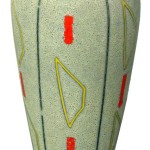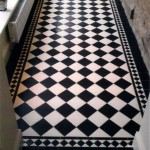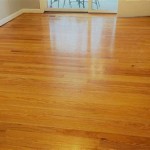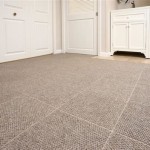Flooring Installation in Colorado Springs: A Comprehensive Guide
Flooring installation in Colorado Springs is a significant undertaking for homeowners and businesses alike. Selecting the right flooring and ensuring proper installation can dramatically impact the aesthetics, functionality, and value of a property. This article provides a detailed overview of the various aspects involved in flooring installation within the Colorado Springs area, encompassing material choices, environmental considerations, installation techniques, and factors specific to the local climate.
Understanding Different Flooring Materials
The selection of flooring material is a critical initial step in any installation project. The market offers a diverse range of options, each with its own set of advantages and disadvantages. Understanding these characteristics is essential for making an informed decision that aligns with individual needs and preferences.
Hardwood Flooring: Hardwood is a classic choice known for its durability, beauty, and timeless appeal. Options include solid hardwood and engineered hardwood. Solid hardwood consists of planks milled from a single piece of wood, while engineered hardwood comprises multiple layers of wood veneer bonded together. Solid hardwood is generally more expensive and requires more specialized installation, but it can be refinished multiple times, extending its lifespan. Engineered hardwood is more resistant to moisture and temperature fluctuations, making it suitable for basements and areas with varying humidity levels. Common wood species used in Colorado Springs include oak, maple, cherry, and hickory. The selection of wood species affects both the appearance and the hardness of the flooring, with harder woods being more resistant to scratches and dents.
Laminate Flooring: Laminate flooring is a synthetic material designed to mimic the look of hardwood, tile, or stone. It consists of a high-density fiberboard core topped with a photographic layer and a protective wear layer. Laminate is a cost-effective option that is relatively easy to install and maintain. It is also resistant to scratches, stains, and fading. However, laminate is not as durable as hardwood and cannot be refinished. It is also susceptible to water damage if not properly installed and sealed. Laminate flooring is a popular choice for homeowners seeking an affordable and durable flooring solution.
Vinyl Flooring: Vinyl flooring is a versatile and resilient option available in various forms, including sheet vinyl, vinyl tiles, and luxury vinyl planks (LVP). Vinyl is highly resistant to water, scratches, and stains, making it ideal for bathrooms, kitchens, and other high-traffic areas. It is also relatively easy to install and maintain. Luxury vinyl planks, in particular, have gained popularity due to their realistic wood or tile appearance and enhanced durability. Vinyl flooring is available in a wide range of styles, colors, and patterns, providing ample design flexibility.
Tile Flooring: Tile flooring encompasses ceramic, porcelain, and natural stone tiles. Tile is extremely durable, water-resistant, and easy to clean. It is a popular choice for bathrooms, kitchens, and entryways. Ceramic and porcelain tiles are manufactured from clay and fired at high temperatures, while natural stone tiles are quarried from the earth and then cut and finished. Natural stone tiles, such as granite, marble, and slate, offer a unique and luxurious look, but they can be more expensive and require more specialized installation. Tile flooring is also a good choice for radiant heating systems, as it readily conducts heat.
Carpet Flooring: Carpet provides warmth, comfort, and sound insulation. It is available in a variety of fibers, including nylon, polyester, wool, and olefin. Nylon is a durable and stain-resistant synthetic fiber, while polyester is a more affordable option. Wool is a natural fiber known for its softness, durability, and resistance to stains and odors. Olefin is a synthetic fiber that is resistant to moisture and fading. Carpet is available in a range of styles, including cut pile, loop pile, and patterned carpet. The selection of carpet fiber and style depends on the intended use of the space and the desired level of durability and comfort.
Preparing the Subfloor
Proper subfloor preparation is crucial for ensuring a successful flooring installation. The subfloor provides the foundation for the new flooring, and any imperfections or irregularities can compromise the integrity and appearance of the finished product. Common subfloor materials include plywood, OSB (oriented strand board), and concrete.
Inspection: The first step in subfloor preparation is a thorough inspection. The subfloor should be checked for any signs of damage, such as cracks, warps, or rot. Any damaged areas should be repaired or replaced before proceeding with the installation. The subfloor should also be level and free of any debris, such as nails, screws, or staples. Uneven subfloors can cause the new flooring to buckle, crack, or squeak. A level and smooth subfloor is essential for a professional-looking installation.
Cleaning: After the inspection, the subfloor should be thoroughly cleaned. This can be done by sweeping, vacuuming, or mopping the surface. Any stubborn dirt or stains should be removed with a suitable cleaning solution. The subfloor should be completely dry before proceeding with the installation. Moisture can cause problems with adhesion and can lead to mold or mildew growth.
Leveling: If the subfloor is uneven, it may need to be leveled. This can be done by using a self-leveling compound or by installing shims. Self-leveling compounds are liquid products that are poured onto the subfloor and allowed to spread and harden, creating a smooth and level surface. Shims are thin pieces of wood or plastic that are placed under the flooring to raise or lower certain areas. The choice between self-leveling compounds and shims depends on the size and severity of the unevenness.
Underlayment: In some cases, an underlayment may be required. Underlayment is a thin layer of material that is installed between the subfloor and the new flooring. Underlayment provides additional cushioning, sound insulation, and moisture protection. It can also help to smooth out minor imperfections in the subfloor. Common underlayment materials include foam, cork, and felt. The type of underlayment used depends on the type of flooring being installed and the desired level of performance.
Addressing Climate Considerations in Colorado Springs
Colorado Springs experiences a semi-arid climate with distinct seasons. The dry air and significant temperature fluctuations can impact flooring materials. Understanding these environmental factors is crucial for selecting the right flooring and ensuring its longevity.
Humidity Levels: Colorado Springs has relatively low humidity levels, particularly during the winter months. This can cause wood flooring to dry out and shrink, leading to gaps and cracks. To mitigate these effects, it is important to acclimate wood flooring to the indoor environment for several days before installation. This allows the wood to adjust to the local humidity levels and minimizes the risk of dimensional changes after installation. It is also recommended to use a humidifier during the winter months to maintain a stable humidity level inside the home.
Temperature Fluctuations: Colorado Springs experiences significant temperature fluctuations throughout the year, with hot summers and cold winters. These temperature changes can cause flooring materials to expand and contract, potentially leading to buckling or cracking. To accommodate these movements, it is important to leave expansion gaps around the perimeter of the room and around any fixed objects, such as pipes or cabinets. These gaps allow the flooring to expand and contract without putting stress on the surrounding structures.
Sun Exposure: Colorado Springs has abundant sunshine, which can cause fading and discoloration of flooring materials over time. To protect flooring from sun damage, it is recommended to use window coverings, such as blinds or curtains, to block direct sunlight. UV-resistant coatings can also be applied to flooring materials to help prevent fading. The placement of furniture and rugs can also help to protect flooring from sun exposure.
Snow and Ice: During the winter months, snow and ice can be tracked into homes, potentially damaging flooring materials. To protect flooring from water damage, it is important to use mats and rugs at entryways to trap moisture. Regular cleaning and drying of floors can also help to prevent water damage. It is also important to address any leaks or spills promptly to prevent water from seeping into the subfloor.
In addition to these climate-related considerations, it is also important to choose flooring materials that are durable and easy to maintain. High-traffic areas, such as entryways and hallways, require flooring that can withstand heavy use and resist scratches and stains. Choosing flooring materials that are appropriate for the local climate and usage patterns can significantly extend the lifespan of the flooring and minimize the need for repairs or replacements.
Selecting the right flooring installation professional is also crucial. Look for contractors who are licensed, insured, and have experience working in the Colorado Springs area. Obtain multiple quotes and compare the services offered, as well as the materials used. Read online reviews and ask for references to ensure the contractor has a good reputation. A qualified and experienced flooring installation professional can provide valuable advice on selecting the right flooring materials and ensuring a successful installation.

Flooring Installation In Colorado Springs Co Mr Handyman

Footprints Floors Flooring Installation Services In Colorado Springs

Flooring Installation Colorado Springs Custom Built Construction
Footprints Floors Flooring Installation Services In Colorado Springs

Footprints Floors Colorado Springs Updated July 2025 39 Photos 21 Reviews Flooring Phone Number Yelp

Flooring Installation Colorado Springs Custom Built Construction

Excellent Colorado Springs Tile Installation Mr Handyman

Footprints Floors Flooring Installation Services In Colorado Springs
%20copy%202.jpg?strip=all)
Flooring Installations In Colorado Springs Co The Floor Trader

Top Flooring Services In Colorado Springs Co Dream Home Interiors







